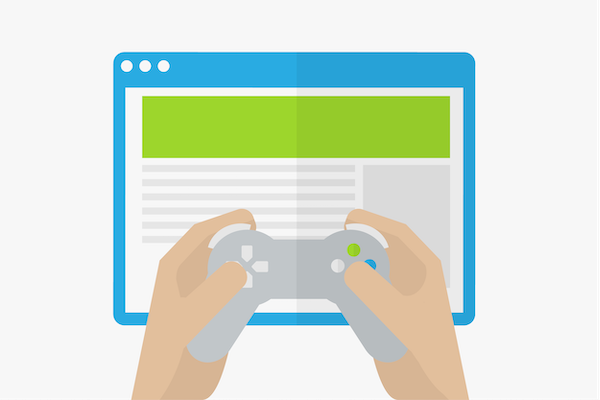Gamification
Gamification describes the transfer of game-like elements into a context outside the actual game.
Definition
With gamification, typical game-design elements and processes are used in a different context. The goal is to effect a change in behavior of the user.
Game-design elements
The so-called typical game-design elements on which most well-known games are based include the following:
- Visible progress: the user can recognize anytime how far he has come in a task, for example showing the percent.
- Ranking list: the players or their points are shown in a ranking list
- Reward: players are rewarded through carrying out certain tasks. For example, the avatar might be allowed to buy things that will be helpful later in the game
- Award: awards will be given away for achieving certain goals
- Time limit – points that have already been achieved might be lost after a certain time due to inactivity
- Rating – the players can rate each other
Gamification in practice
Many people come into contact with gamification daily without realising. Game design elements have already been featuring in marketing campaigns for some time, for example, when food or drink providers print a winning code on bottle lids of packaging which can then be scanned and entered into a website to receive a prize. Even loyalty stamp cards – “9 coffees – 1 free” from a local café or free collectable cartoons in chocolate bars are categorized as gamification.
The many loyalty- and bonus cards, which one can obtain in almost any clothes or electronic shop, are also part of gamification, as the customer is rewarded for different actions. Purchases on certain days, buying a certain product, shopping on one’s birthday among others results in an increase in points. When the players have reached a certain number of points, they are rewarded. These are for example the typical processes that you would see in computer games.
Objectives
The objective of gamification is to provoke a change in behvior of the user. In the field of marketing, the goal is usually to increase conversions and essentially to generate profit. Typical game-design elements are also already used in industry. Therefore, gamification often is about increasing the motivation of employees which is particularly important in monotonous work.
Application
Aside from the above-mentioned areas of use, gamification is also used in the following areas:
- Online weight loss programs in which the participants count points or calories, reach daily/weekly/monthly goals, and can take part in challenges or receive virtual rewards for keeping to their goals.
- Virtual running competitions in which participants enter their runs and daily are shown in a ranking list
- Q&A platforms which reward the users when they provide an answer that is particularly helpful.
- Platforms like Foursquare in which the users win an award when they often ‘log in’ in different places.

